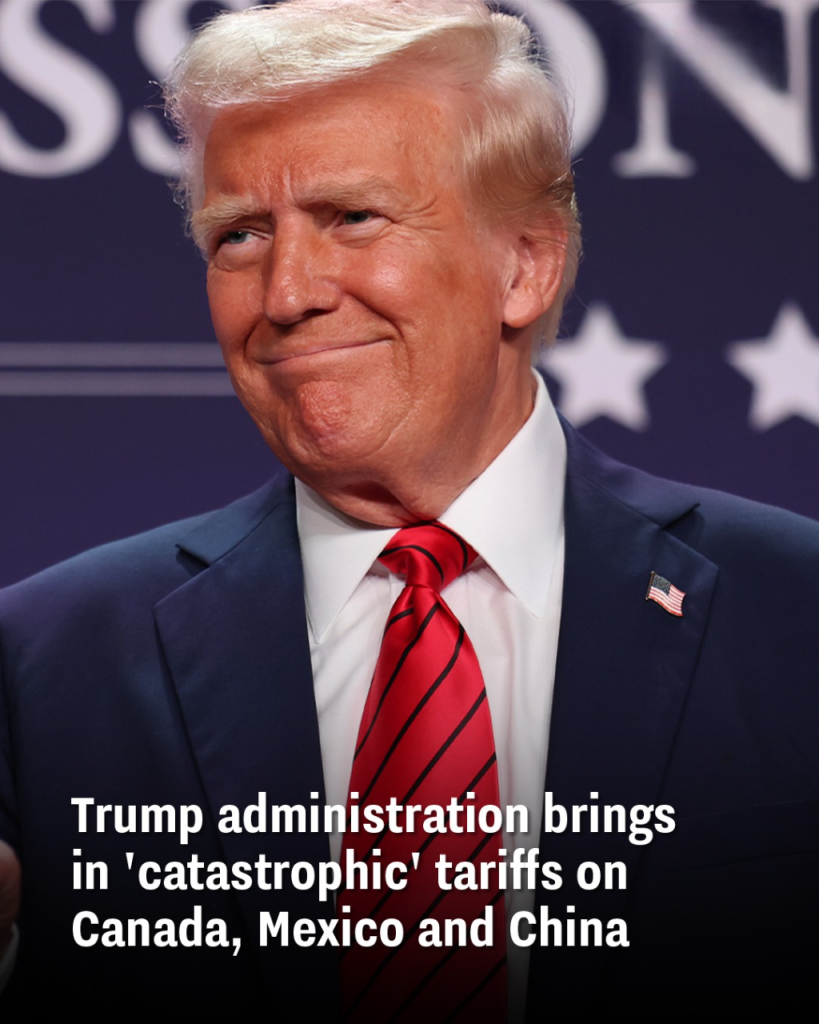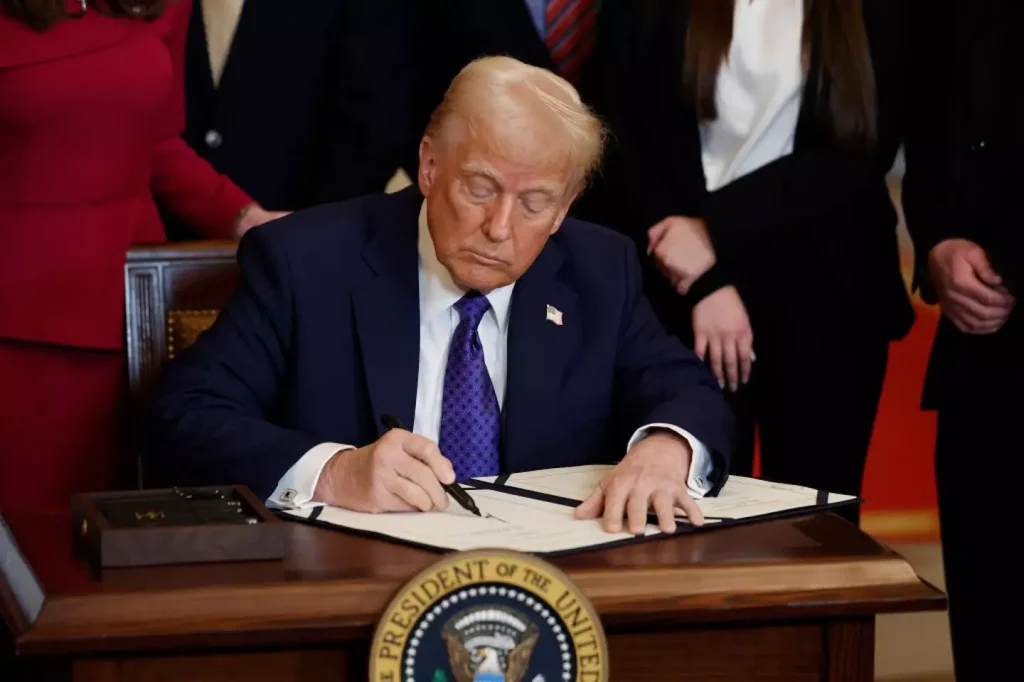
It seems the Trump administration is not eager to smooth things over with neighboring countries.
In under two weeks back in office, President Trump has implemented a series of changes to the country’s operations.
From altering policies on passports and immigration to barring transgender individuals from serving in the military, Trump has set a record for signing executive orders on his first day back in power.

It’s believed that Trump has already signed hundreds of executive orders (Chip Somodevilla/Getty Images).
One of the most contentious orders has been renaming the Gulf of Mexico to the Gulf of America, with Google officially reflecting this change on its maps for U.S. users earlier this week.
Now, the Trump administration is sticking to its promise of imposing higher import tariffs on countries like China, Canada, and Mexico. Starting today (February 1), tariffs are up to 25 percent for goods from Mexico and Canada, while those from China will face a 10 percent tariff.
Why did Trump introduce the tariffs?
President Trump had long warned about imposing tariffs as a way to pressure other nations into taking stronger action against illegal immigration and the trafficking of fentanyl-related chemicals. At the same time, he has emphasized that tariffs are part of his strategy to strengthen American manufacturing.
“Starting tomorrow, those tariffs will be in place,” White House press secretary Karoline Leavitt told reporters on Friday (January 31).
“These are promises made and promises kept by the president.”
How Canada, Mexico, and China Are Reacting to the Tariffs
Unsurprisingly, officials from Canada, Mexico, and China have not taken the newly imposed tariffs lightly.
Both Canada and Mexico have indicated that they are prepared to introduce retaliatory tariffs if necessary.
“We’re ready with a response, a purposeful, forceful but reasonable, immediate response,” Canadian Prime Minister Justin Trudeau stated ahead of the tariff hikes.

Meanwhile, Liu Pengyu, spokesperson for the Chinese Embassy in Washington, stressed that “there is no winner in a trade war or tariff war” like the one being initiated by the Trump administration.
During a press conference on Friday, Mexican President Claudia Sheinbaum emphasized Mexico’s preparedness, stating: “We have Plan A, Plan B, Plan C, depending on what the government of the United States decides. It is very important for the people of Mexico to know that we will always defend the dignity of our people, that we will always defend respect for our sovereignty, and engage in dialogue as equals, as we have always stated, without subordination.”
Meanwhile, a recent study by Warwick McKibbin and Marcus Noland from the Peterson Institute for International Economics concluded that the tariffs—25% on Canadian and Mexican imports and 10% on Chinese goods—would be detrimental to all parties involved, including the U.S. itself.
The study warned that “For Mexico, a 25 percent tariff would be catastrophic,” adding that the economic downturn caused by the tariffs could further incentivize illegal border crossings into the U.S.—ironically undermining another key objective of the Trump administration.

